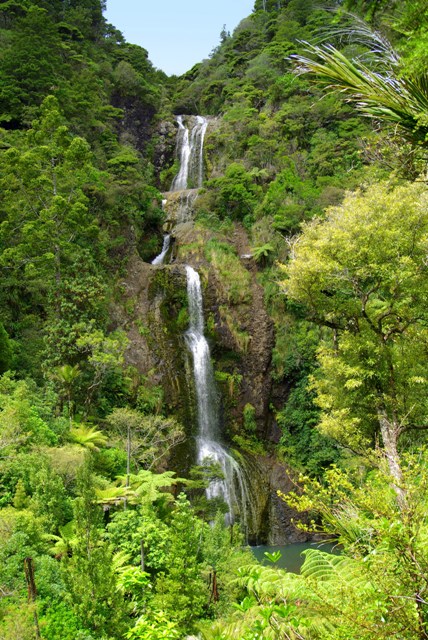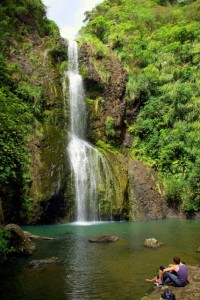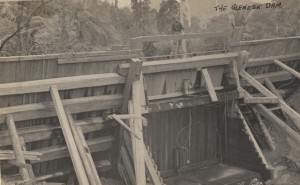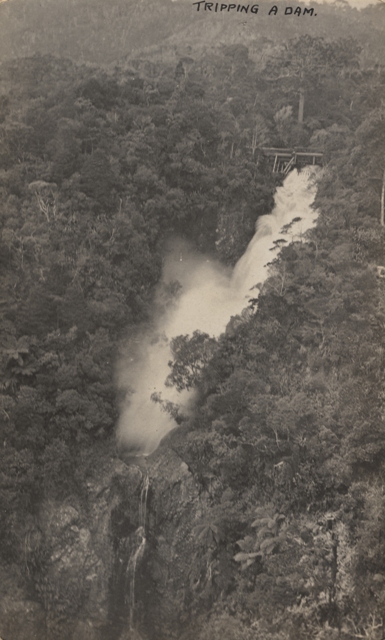 The Kitekite Falls are one of the most famous waterfalls in the Waitakere Ranges with six drops into a large lake-like pool at the bottom. The falls are reached by walking tracks at the end of Glen Esk Road.
The Kitekite Falls are one of the most famous waterfalls in the Waitakere Ranges with six drops into a large lake-like pool at the bottom. The falls are reached by walking tracks at the end of Glen Esk Road.
The usual route is to take the Kitekite Track by the large kauri stump which takes you up the true left side the Kitekite Stream (right hand side if you are walking upstream, left if you are coming down!). The track takes you through rainforest that has recovered from milling until you reach a junction with the Knutzen Track (named after Hans Peter Knutzen, Manager at the Piha Mill from 1912 to 1921). It is best to continue on the Knutzen Track which is well-formed with an easy grade and takes you to the base of the falls with a spectacular view of the falls on the way.
At the end of the Knutzen Track you cross the stream onto a rocky platform which is a great place to view the falls from below, eat lunch and even swim. You can swim in under the falls and disappear behind the sheet of water.
You then descend back to Piha on the other side of the stream, although you do need to recross the stream when the track reaches the Knutzen. At one time the park rangers installed concrete stepping stones here and there was such an outcry they were taken out. You will need to step from stone to stone or walk through the water.
Near the bottom you can cross the stream on a wooden bridge and return via the Byers Walk which is full of old trees, including a spectacular rata and supplejack forest. There is a lovely grassy clearing where the boom of the Mill was once positioned which is a great spot with rustic picnic tables for a picnic.
The Kitekite Falls is the Maori name, but the falls were named by the original Pakeha settlers of Piha, Glen Esk Falls, after one of the Angus Glens near their Scottish homeland.
The Cowan and Ness families first settled above the falls in the 1860s, and you can reach the top of the falls by taking a turn-off on the Kitekite Track. There is a good swimming pool at the top and you can see the notches in the rock which were where the Glen Esk Dam stood after 1910.
Here there was a milling camp, next to a holding dam which collected the logs from further upstream. Originally these were tipped over the falls, but that first tripping resulted in so many crushed logs that after that the dam was simply used to collect logs.
From there they were taken by shutes down into the valley below and the release of water in the dam was used to drive the logs down to the Mill.





